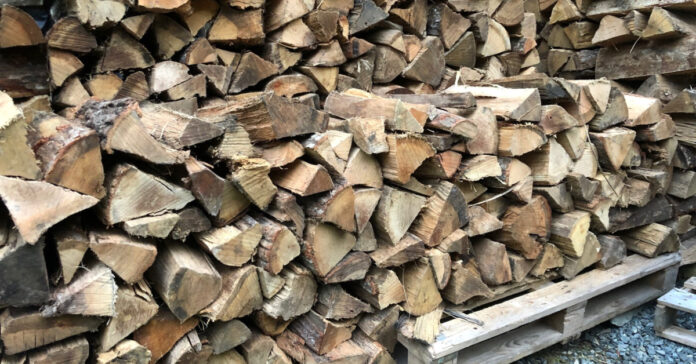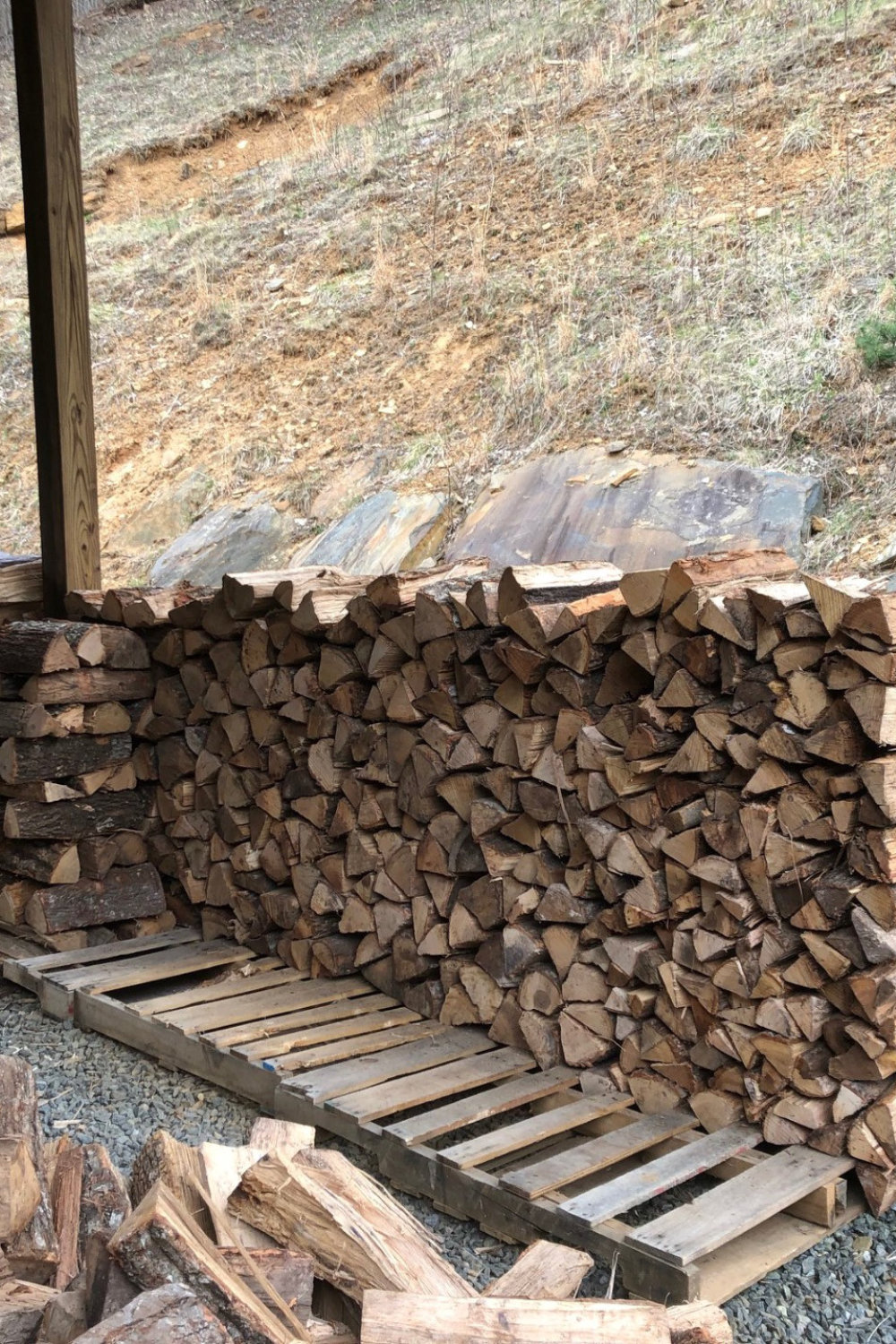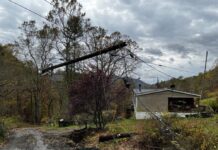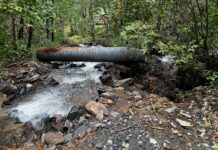
Yesterday, I wrote about families in Europe who are heading into the woods to gather fallen branches and sticks to burn to help them stay warm this winter.
As someone who heats with wood, I empathize with the wood gatherers. At the end of the world as we know it, I’ll be desperate for more firewood myself, especially if we are burning wood to cook food as well as stay warm.
When you heat with wood, you are always thinking about where your next cord of wood is coming from. I have more than a year’s worth of firewood in six wood piles, but that doesn’t stop me from wishing I had two years’ worth. When I do, I’ll no doubt wish I had three years’ worth, which sounds like a reasonable target. I recognize that if the SHTF, procuring firewood will become as important to me as procuring food and ensuring our safety.
Walking in the Woods
When you rely on wood heat, it changes how you look at the forest. When I walk through the woods, I look at fallen trees, and I think, “No, that one’s too rotten,” or “Wow, that’s a nice one, but how would I ever get it back home?” I need a side-by-side with a dump bed because carrying a log a quarter mile is not a very efficient way to harvest firewood. Instead of cutting up a dead tree a quarter of a mile from the house, I would be better off cutting down a living tree 100 feet away, assuming I had time to allow the wood to season.
When I walk up and down our road, I look at the unimproved property (meaning just forest, no buildings) across the road from us and I see fallen trees wedged at a sharp angle against standing trees. I can’t help but think that those would be great logs to cut down for firewood. They are dead, dry, and are not lying on the ground, so they haven’t rotted. I’m tempted to contact the owner, but he live in Illinois and we’ve never met.
You can bet that if the SHTF and the rule of law no longer applies, then the rule of self-preservation will see to those hung-up dead trees cut, split, and in my woodpile. That future firewood is perfect because it is close to the road, easy to harvest, and even easier to haul back to our property to be split and stacked. It is also dry and much easier to burn than green wood.
Trees and Barriers
There are several points on our long dirt road where cutting down one or more trees in a strategic manner would provide a nice obstacle and prevent “outsiders” from driving up our mountain. Not only would it prevent anyone from just riding up the hill, it gives the residents a point at which to engage any unfriendlies. I’ve even plotted out positions and considered escape or withdrawal routes.
The most effective way to achieve this is to cut a tree just enough so it tips over without being cut or tearing free from the stump. This anchors one end and makes it difficult to push the tree out of the way or to pull it out of the way using a tow strap or chain. To increase the effectiveness, interlace several trees so they lie on top of each other. You can achieve this by cutting down a tree on the left at an angle that lies uphill. Then cut a tree uphill on the right side of the road so it falls downhill and lands on top of and overlaps the first tree. Just make sure you don’t do it until the threat is high because it will keep you hemmed in as much as it keeps others out.
Note that the trunk is the biggest barrier in this situation, although the limbs may interlock and help make removal difficult. If the proper tree is selected, creating these barriers into place should generate a good deal of excess wood that makes firewood.
Hardwoods vs Softwood
The trees nearest our house are at least 100 feet away. This is to help protect the house from a wildfire. Of course, it means more work to harvest them. However, doing so will clear some lines of fire and make defending the home easier.
We have many maples, which is a decent-burning hardwood. My land doesn’t have many oaks, and many of our closest trees are softwoods. Softwoods are less desirable as firewood because they don’t offer as many BTUs per pound as hardwood. We have some locust and a scattering of hickory, both hardwoods which make excellent firewood. There are some birch, which make good firewood. I don’t have many cherry trees, but they grow locally and make nice firewood that dries faster than oak.
When we thin the saplings on our hill, I’m more likely to leave a locust than a tulip poplar because I know it will produce better firewood. Of course, it’s possible the tulip poplar might grow quicker and result in a thicker tree. It also should split easier and dry faster, so it’s a tradeoff.
Soft wood burns more quickly than hardwood. For example, tulip poplar offers only about two-thirds as much heat per cord as oak. However, if that’s what we have, that’s what I’ll burn. We may have to add wood to the stove more frequently, but softwoods will still generate heat. Softwoods also dry and become seasoned more quickly. If I was cutting wood in June to burn that winter, I’d aim for softer woods and split them smaller. A good hardwood like oak would take too long to dry.
Burning Green Wood
Green wood is difficult to burn because it has such a high moisture content. If you are forced to burn it, my recommendation would be to start your fire using well-seasoned, dry wood. Once the fire is burning, toss the green wood on. The heat will force the wood to dry as it burns, but you will see the ends of the logs get moist as steam shoots out of the log. In a woodstove, this steam can dampen the fire and cool the smoke, making it more likely creosote will build up in your stove pipe or chimney. In an outdoor fire pit, the steam is less likely to be a problem because it can escape into the air, but in a survival situation, a fire pit would be a waste of firewood unless you are cooking over it.
I season wood by splitting it and stacking it in rows on top of pallets. To properly dry, you want the wood off the ground. I leave a few inches between each row to allow good air flow. I prefer to expose the wood to the sun and wind, which help dry it out. If we expect snow, I will cover the top and possibly the side towards the prevailing wind because snow will get driven into the woodpile. I don’t cover the wood in the summer, even if rain is expected. About six weeks before I plan to use the wood, I will cover the top and allow the tarp to hand down a foot or two. You don’t want to encapsulate the wood in a cover because it will trap condensation and other moisture, but it’s best to keep it dry before using.
Firewood and Theft
I expect firewood will be very desirable this winter and many sellers may run out of seasoned wood. I’ve seen people online complain about firewood thefts. While this is always possible, I am not terribly worried. It took seven trailers to haul my firewood here. One guy in a pickup truck will not make much of a dent in my supply. Plus, loading firewood is a noisy and lengthy process. If we’re home, we’ll know someone’s out there, and we will hold the thief at gunpoint until the sheriff arrives. If we’re not home, they will be on camera.
Today, the theft of firewood would be an inconvenience. After the SHTF, it would put us at greater risk and our response will be proportionate.
Would I steal someone’s firewood? No, but a few months into a post-SHTF scenario, I’m not beyond taking fallen or dead-standing trees from an unoccupied land in the general area.








